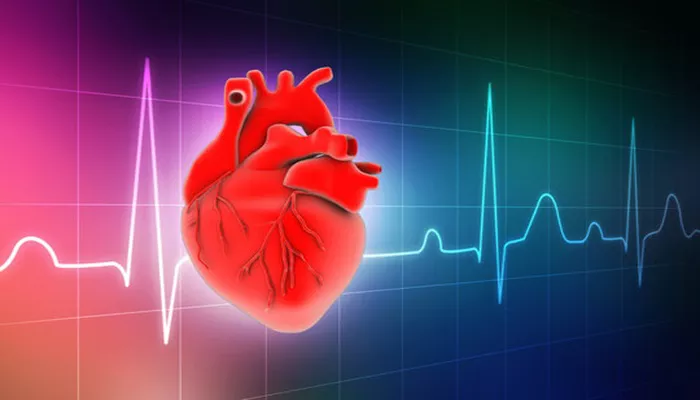Cardiac arrhythmias are conditions characterized by irregular heartbeats, which can range from harmless to life-threatening. Among the various pharmacological interventions available to manage arrhythmias, lidocaine has been a mainstay in the treatment of certain types of this condition, particularly in emergency settings. This article delves into the reasons why lidocaine is used for cardiac arrhythmia, its mechanism of action, clinical applications, benefits, and potential side effects.
What Is Cardiac Arrhythmia?
Cardiac arrhythmias are disruptions in the heart’s normal rhythm. These disturbances can manifest as:
Tachycardia: Abnormally fast heart rate.
Bradycardia: Abnormally slow heart rate.
Fibrillation: Irregular and often rapid heartbeats.
Arrhythmias can originate in different parts of the heart, such as the atria (atrial fibrillation) or the ventricles (ventricular tachycardia or fibrillation). These conditions can impair the heart’s ability to pump blood effectively, leading to symptoms like palpitations, dizziness, shortness of breath, chest pain, or even sudden cardiac arrest.
SEE ALSO: How Arrhythmia Affects Daily Life
Mechanism of Action of Lidocaine
Lidocaine is a local anesthetic and antiarrhythmic drug that belongs to the class I-B antiarrhythmic agents. It primarily works by blocking sodium channels in the cardiac cell membranes. This action has several critical effects on cardiac electrophysiology:
Reduction of Phase 0 Depolarization: By blocking sodium channels, lidocaine decreases the rapid influx of sodium ions during phase 0 of the cardiac action potential. This leads to a slower and less steep depolarization phase, which stabilizes the cardiac membrane.
Shortening of Action Potential Duration: Lidocaine shortens the action potential duration and the effective refractory period, particularly in ischemic myocardial tissue. This helps to prevent re-entry circuits that can lead to arrhythmias.
Inhibition of Automaticity: Lidocaine decreases the automaticity of ectopic pacemaker cells, which reduces the likelihood of abnormal impulses initiating an arrhythmia.
Selective Action on Diseased Tissue: Lidocaine preferentially acts on ischemic or depolarized cardiac cells rather than normal, healthy myocardial tissue. This selective action helps to mitigate arrhythmias without significantly affecting normal cardiac function.
Clinical Applications of Lidocaine in Cardiac Arrhythmia
Lidocaine is predominantly used in the acute management of ventricular arrhythmias, particularly in the context of myocardial infarction or cardiac surgery. Its primary clinical applications include:
Ventricular Tachycardia (VT): Lidocaine is effective in treating sustained ventricular tachycardia, a condition where rapid electrical impulses originate from the ventricles, leading to a dangerously fast heart rate.
Ventricular Fibrillation (VF): In cases of ventricular fibrillation, where the ventricles quiver ineffectively instead of contracting properly, lidocaine can be used as an adjunct to defibrillation and other resuscitative measures.
Prevention of Arrhythmias Post-Myocardial Infarction: Lidocaine is sometimes administered prophylactically to prevent the occurrence of life-threatening ventricular arrhythmias following a heart attack.
Cardiac Surgery: Lidocaine can be used during and after cardiac surgery to manage or prevent arrhythmias that may arise due to surgical manipulation of the heart.
Advantages of Using Lidocaine
The use of lidocaine in the management of cardiac arrhythmias offers several advantages:
Rapid Onset of Action: Lidocaine has a rapid onset of action, making it suitable for emergency situations where prompt stabilization of the heart’s rhythm is crucial.
Short Half-Life: The drug has a relatively short half-life, which allows for quick titration and cessation of its effects if necessary. This is particularly beneficial in acute settings where the patient’s condition may change rapidly.
Minimal Hemodynamic Effects: Unlike some other antiarrhythmic agents, lidocaine has minimal effects on blood pressure and heart rate, which makes it safer for use in patients who may be hemodynamically unstable.
Preferential Action on Ischemic Tissue: Lidocaine’s selective action on ischemic or damaged cardiac cells, rather than healthy tissue, reduces the risk of proarrhythmic effects and minimizes the impact on overall cardiac function.
Potential Side Effects And Risks
While lidocaine is generally well-tolerated, it is not without potential side effects and risks. These may include:
Central Nervous System Effects: High plasma concentrations of lidocaine can lead to central nervous system toxicity, manifesting as dizziness, confusion, tremors, seizures, or even coma.
Cardiovascular Effects: Although rare, lidocaine can cause cardiovascular side effects such as bradycardia, hypotension, or heart block, particularly in patients with pre-existing cardiac conditions.
Allergic Reactions: Hypersensitivity reactions, including rash, itching, or anaphylaxis, can occur in some individuals.
Drug Interactions: Lidocaine can interact with other medications, particularly other antiarrhythmic agents, leading to additive effects or increased toxicity.
Conclusion
Lidocaine remains a valuable drug in the management of certain types of cardiac arrhythmias, particularly ventricular arrhythmias in acute and emergency settings. Its mechanism of action, which involves sodium channel blockade, effectively stabilizes cardiac cell membranes and reduces abnormal electrical activity in the heart. The advantages of its rapid onset, short half-life, minimal hemodynamic effects, and selective action on ischemic tissue make it an ideal choice for managing life-threatening arrhythmias. However, careful monitoring is required to mitigate potential side effects and ensure the safe use of this potent antiarrhythmic agent. As our understanding of arrhythmias and pharmacology evolves, lidocaine continues to play a critical role in saving lives and improving cardiac outcomes.

